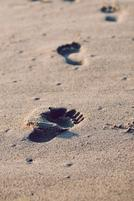Table of Contents

Diabetic feet – When you have diabetes, your feet need extra care and attention. Diabetes can damage the nerve endings and blood vessels in your feet, making you less likely to notice when your feet are injured. Diabetes also limits your body’s ability to fight infection and get blood to areas that need it. If you get a minor foot injury, it could become an ulcer or a serious infection. With good foot care, you can prevent most of these problems.

How can you care for your diabetic feet at home?
- Keep your blood sugar close to normal by watching what and how much you eat, monitoring blood sugar, taking medicines if prescribed, and getting regular exercise.
- Do not smoke. Smoking affects blood flow and can make foot problems worse. If you need help quitting, talk to your doctor about stop-smoking programs and medicines. These can increase your chances of quitting for good.
- Eat a diet that is low in fats. High fat intake can cause fat to build up in your blood vessels and decrease blood flow.
- Inspect your feet daily for blisters, cuts, cracks, or sores. If you cannot see well, use a mirror or have someone help you.
- Take care of your feet:
◦ Wash your feet every day. Use warm (not hot) water. Check the water temperature with your wrists or other part of your body, not your feet.
◦ Dry your feet well. Pat them dry. Do not rub the skin on your feet too hard. Dry well between your toes. If the skin on your feet stays moist, bacteria or a fungus can grow, which can lead to infection.
◦ Keep your skin soft. Use moisturizing skin cream to keep the skin on your feet soft and prevent calluses and cracks. But do not put the cream between your toes, and stop using any cream that causes a rash.
◦ Clean underneath your toenails carefully. Do not use a sharp object to clean underneath your toenails. Use the blunt end of a nail file or other rounded tool.
◦ Trim and file your toenails straight across to prevent ingrown toenails. Use a nail clipper, not scissors. Use an emery board to smooth the edges.
- Change socks daily. Socks without seams are best, because seams often rub the feet. You can find socks for people with diabetes from specialty catalogs.
- Look inside your shoes every day for things like gravel or torn linings, which could cause blisters or sores.
- Buy shoes that fit well:
◦ Look for shoes that have plenty of space around the toes. This helps prevent bunions and blisters.
◦ Try on shoes while wearing the kind of socks you will usually wear with the shoes. ◦ Avoid plastic shoes. They may rub your feet and cause blisters. Good shoes should be made of materials that are flexible and breathable, such as leather or cloth.
◦ Break in new shoes slowly by wearing them for no more than an hour a day for several days. Take extra time to check your feet for red areas, blisters, or other problems after you wear new shoes.
- Do not go barefoot. Do not wear sandals, and do not wear shoes with very thin soles. Thin soles are easy to puncture. They also do not protect your feet from hot pavement or cold weather. • Have your doctor check your feet during each visit. If you have a foot problem, see your doctor. Do not try to treat an early foot problem at home. Home remedies or treatments that you can buy without a prescription (such as corn removers) can be harmful.
- Always get early treatment for foot problems. A minor irritation can lead to a major problem if not properly cared for early.








